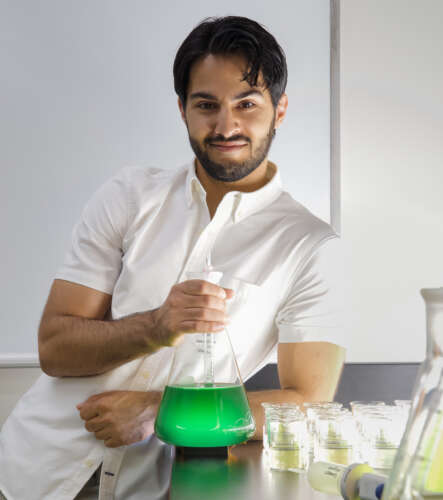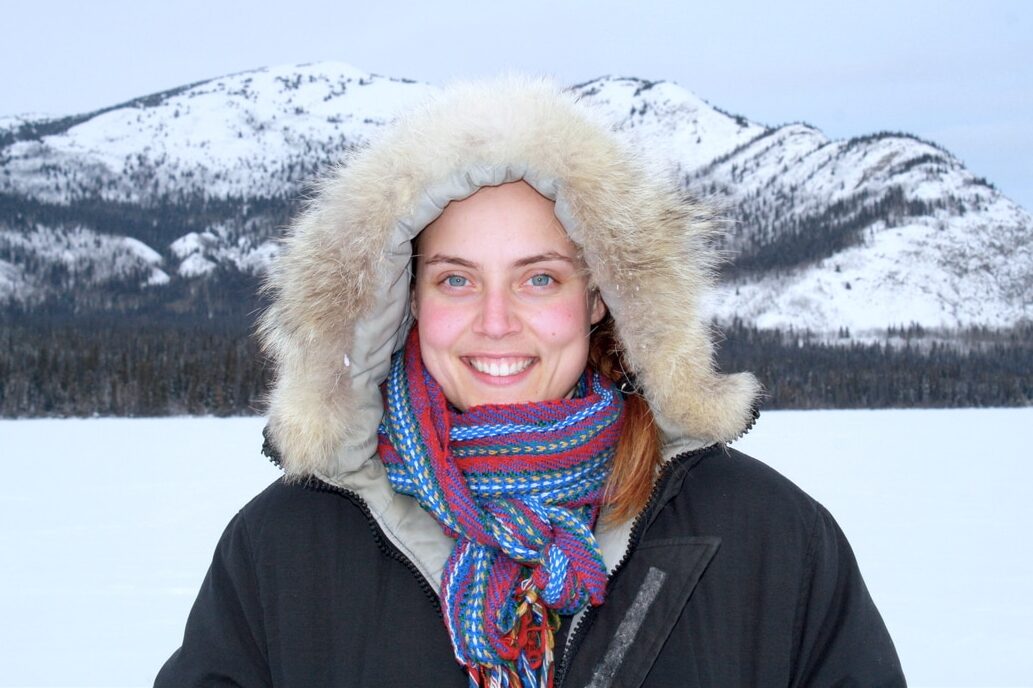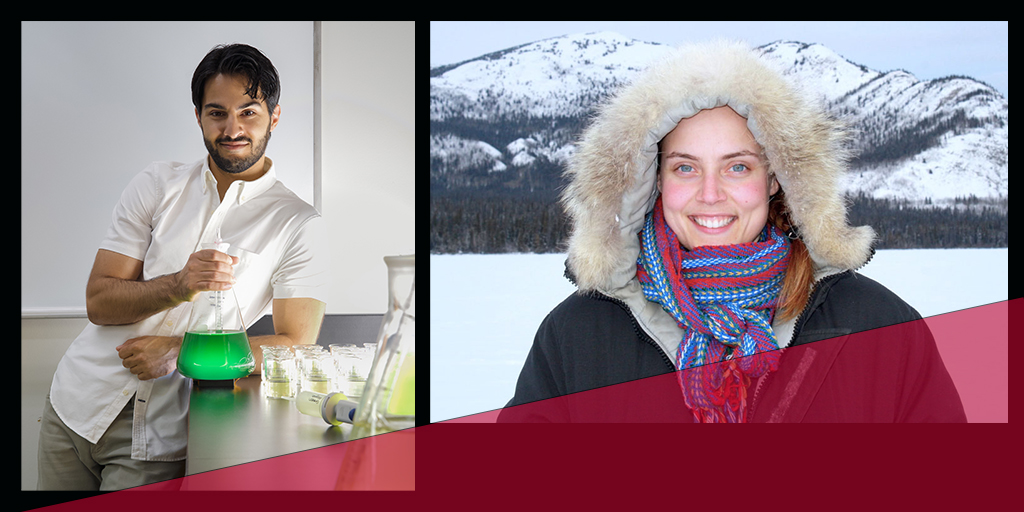Two University of Guelph post-doctoral researchers – one looking to better manage harmful algal blooms, the other seeking to bring Indigenous values into wildlife conservation – have been awarded Liber Ero fellowships.
The highly competitive fellowships, launched in 2013, are awarded to only four post-docs in Canada each year and provide recipients with $155,000 each over two years.
The fellowships are designed to support early-career scientists during this critical stage in their careers as they conduct research intended to inform conservation and management issues relevant to Canada.
Drs. René Shahmohamadloo and Allyson Menzies will work for two years with mentors in U of G’s College of Biological Science and Ontario Agricultural College, respectively, and will collaborate with governments and non-governmental institutions.
Shahmohamadloo to study genomics of harmful algal blooms

Shahmohamadloo will develop a genetic screening tool for monitoring a genus of cyanobacteria (or blue-green algae) called Microcystis.
Microcystis blooms pose one of the greatest challenges to freshwater biodiversity conservation. Their recent upsurge worldwide is due partly to climate change and eutrophication.
The economic losses from harmful algal blooms are estimated to exceed US$4 billion annually in North America due to deleterious effects on essential goods and services including drinking water, recreation and tourism, and fisheries. Some strains of Microcystis can also produce toxins called microcystins, which at sufficient concentrations can kill humans and wildlife.
Policy interventions for controlling phosphorus loading, a key factor in algal bloom dynamics, have been widely debated because of high management costs and resistance to change in stewarding the land. However, some Microcystis blooms have increased even without excessive phosphorus loading, suggesting that ecological mechanisms beyond nutrients can regulate their formation.
“Often, we speak about Microcystis as though all of its strains are one and the same, when in fact we’re uncovering the potentially critical role of broad intraspecific genetic diversity,” he said.
“What’s more, Microcystis blooms are not strictly a human problem. They can affect an entire ecosystem as the toxins accumulate through the food chain into fish, birds and wildlife. I want to reframe both how we perceive the problem and how we tackle understanding the biology of these blooms.”
Shahmohamadloo wants to develop a genomics tool that will track and monitor harmful algal blooms in Lake Erie, which contains much of the global diversity of Microcystis, he said. He aims to better understand the full spectrum of Microcystis strains in the lake and what biological mechanisms drive their frequency, severity and toxicity.
He will work with U of G population ecologist Dr. John Fryxell and Washington State University evolutionary ecologist Dr. Seth Rudman to develop and validate this genomics tool using an aquatic model ecosystem called the Limnotron within U of G’s Biodiversity Institute of Ontario. They will replicate a controlled lake environment and test how environmental conditions influence Microcystis genotypes.
He will then collaborate with Environment and Climate Change Canada and the Ontario Ministry of the Environment, Conservation and Parks to deploy this tool in Lake Erie.
Menzies to bring Indigenous values into wildlife conservation

Menzies will use her fellowship to create best practices and online resources about how to better prioritize Indigenous values in wildlife and environmental conservation.
She said that, for decades, decision-making on wildlife conservation has been based on Western science concepts and has failed to afford due respect to the knowledge and practices of Indigenous people who have lived in harmony with the land and wildlife for millennia.
“While there has been movement towards acknowledging the value of Indigenous knowledge and practices for wildlife conservation, we are stuck at the point of ‘how do we actually do it in practice.’ There are few easily accessible resources that outline how to weave knowledge systems,” she said.
To build those resources, Menzies plans to take part in the design and implementation of Indigenous-led moose monitoring programs in Manitoba and northern Ontario.
Monitoring moose in remote areas is challenging and often relies on expensive aerial surveys that can leave temporal and geographical data gaps. Indigenous communities in the area are concerned about moose and want to fill those data gaps with their own knowledge and community-led monitoring programs.
That will entail building relationships and speaking with First Nations in moose territories to better understand their priorities related to conservation initiatives.
“Engaging the community, listening to their perspectives and working together to ensure youth and Elders are the foundation of the monitoring programs will be key,” she said. “This will result in value for both the moose of the area and for the community, as they learn about scientific methods, pass on their own knowledge and spend time on the land.”
Menzies is collaborating with the conservation group Nature United, while Dr. Jesse Popp, a professor in the Ontario Agricultural College and holder of the Chair in Indigenous Environmental Science, will provide academic mentorship.
